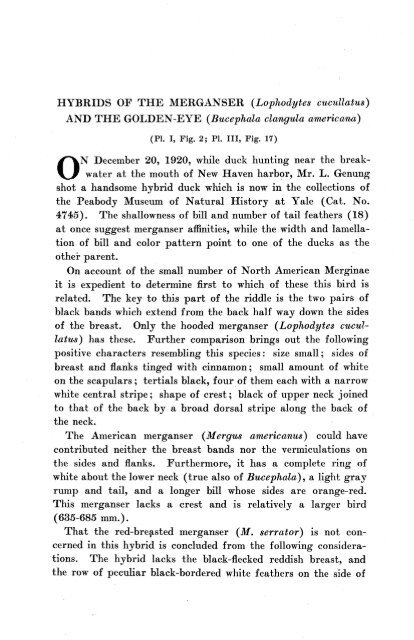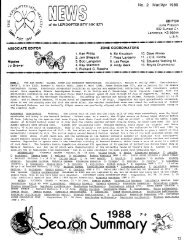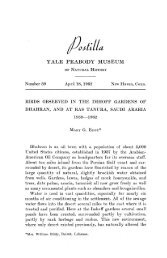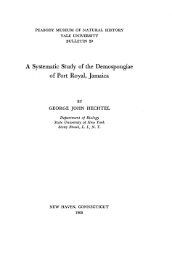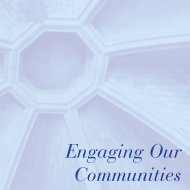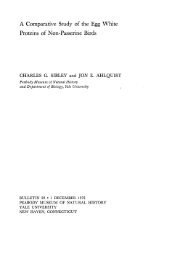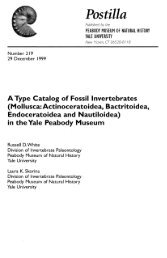Bulletin 3 - Peabody Museum of Natural History - Yale University
Bulletin 3 - Peabody Museum of Natural History - Yale University
Bulletin 3 - Peabody Museum of Natural History - Yale University
Create successful ePaper yourself
Turn your PDF publications into a flip-book with our unique Google optimized e-Paper software.
HYBRIDS OF THE MERGANSER (LophodytesAND THE GOLDEN-EYE (Bucephala clangulacucullatus)americana)(PI. I, Fig. 2; PI. Ill, Fig. 17)ON December 20, 1920, while duck hunting near the breakwaterat the mouth <strong>of</strong> New Haven harbor, Mr. L. Genungshot a handsome hybrid duck which is now in the collections <strong>of</strong>the <strong>Peabody</strong> <strong>Museum</strong> <strong>of</strong> <strong>Natural</strong> <strong>History</strong> at <strong>Yale</strong> (Cat. No.4745). The shallowness <strong>of</strong> bill and number <strong>of</strong> tail feathers (18)at once suggest merganser affinities, while the width and lamellation<strong>of</strong> bill and color pattern point to one <strong>of</strong> the ducks as theother parent.On account <strong>of</strong> the small number <strong>of</strong> North American Merginaeit is expedient to determine first to which <strong>of</strong> these this bird isrelated. The key to this part <strong>of</strong> the riddle is the two pairs <strong>of</strong>black bands which extend from the back half way down the sides<strong>of</strong> the breast. Only the hooded merganser (Lophodytes cucullatus)has these. Further comparison brings out the followingpositive characters resembling this species: size small; sides <strong>of</strong>breast and flanks tinged with cinnamon; small amount <strong>of</strong> whiteon the scapulars; tertials black, four <strong>of</strong> them each with a narrowwhite central stripe; shape <strong>of</strong> crest; black <strong>of</strong> upper neck joinedto that <strong>of</strong> the back by a broad dorsal stripe along the back <strong>of</strong>the neck.The American merganser (Mergus americanus) could havecontributed neither the breast bands nor the vermiculations onthe sides and flanks. Furthermore, it has a complete ring <strong>of</strong>white about the lower neck (true also <strong>of</strong> Bucephala), a light grayrump and tail, and a longer bill whose sides are orange-red.This merganser lacks a crest and is relatively a larger bird(635-685 mm.).That the red-breasted merganser (M. serrator) is not concernedin this hybrid is concluded from the following considerations.The hybrid lacks the black-flecked reddish breast, andthe row <strong>of</strong> peculiar black-bordered white feathers on the side <strong>of</strong>


